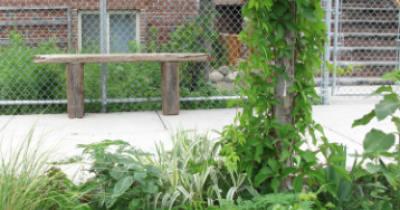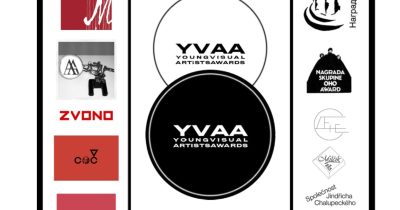“In Depth: Minefields”, solo show by Alice Miceli
Curated by Luiz Camillo Osorio and Gabriela Davies
From May 18th to July 13th, 2019
Villa Aymoré
Ladeira da Glória, 26, Gloria, Rio de Janeiro, Brazil
Opening hours: Wed – Sun, 1 pm to 6 pm
To photograph what can’t be seen. Since the project in Chernobyl, PIPA 2014 Winner Alice Miceli investigates sites taken by an invisible danger and seeks to find visibility to that which, although is not offered to the eye to see, is a real threat. In “Project Chernobyl”, the threat of radiation hung over all things; in “Minefields”, it is below the ground. The travel to Angola, commissioned by Institute PIPA, was Alice’s last destination for the series “In Depth: Minefields”, also composed of photos taken in minefields in Cambodia, Colombia and Bosnia. The complete series, acquired by Institute PIPA, is first presented at Villa Aymoré and is on view until July 13th.
In a distracted sight, the images may seem all the same, but if observed carefully, they reveal some sort of oncoming tension. The subtle changes in the frame suggest the body’s displacement within the space, where “in every inch of that ground there might be someone’s last instant”, in the artist’s words. Here, Alice explores territories that “have undergone bloody conflicts and where the killing continues even after peace has been declared”.
“This series seems to me to be about this – about the veiled memory of war, about the stubbornness of the insurmountable territory, about the fear of moving that remains as a residue (palpable and unconscious) of a war that is finished but which never ends”. This is how Luiz Camillo Osorio describes Alice Miceli ‘s show.
The exhibition also presented complementary materials, such as a map and a timeline featuring the countries and conflicts where the artist has photographed (click here to see the full timeline in a pdf file).
Alice Miceli also shared with the audience a diagram (pictured below) relating focal lengths, vantage points and the magnification size in the image, she uses in her work.
“The focal length of a lens determines its angle of view, and thus how much the subject will be magnified for a given position. Wide-angle lenses have short focal lengths, telephoto lenses have longer ones. Wide-angle can indicate close proximity to the subject, while telephoto can be done from a distance. We see here different focal lengths ( each is one colour) in successive vantage points, laid in space in order to always keep the subject in a constant magnification size in the image.”– Alice Miceli
In the opening event, it was also available a zine featuring a conversation between Alice Miceli and the artistic director of Luhring Augustine Gallery (New York).
Click here to check out the zine presented at the exhibition, at Villa Aymoré, with texts and images.
Read the curatorial text, written by Luiz Camillo Osorio:
Images of what is not shown: the sublime underground
The series In Depth: Minefields (Em Profundidade: Campos Minados) by Alice Miceli, a project that she has been working on for the last few years, exemplifies a fundamental aspect of her poetics: the combination of politics, the image and photographic experimentation. She explores territories that have undergone bloody conflicts and where the killing continues even after peace has been declared. The underground mines continue to explode there. International organizations are working to defuse them. The question is how to get there, how to explain the relevance of her artistic project and how to work with the image in order that it is not simply an illustration of a cause or question. Knowing of the progress of this project, in 2018 the INSTITUTO PIPA commissioned the last stage of the series in Angola, and acquired the remaining stages in order to have the complete series in its collection.
There is no drama in the images: they are banal and beguiling landscapes. If you pass by quickly, you won’t see anything. And therein lies the danger. This series of minefields investigates a question that was central to her previous project about Chernobyl – finding a certain visibility for what tangibly threatens us and is not perceptible to the eye (or the camera). How does one transform this invisibility into an image? Pursuing this veiled image implies knowing that there is a constant dislocation between what we see and what we know, that not everything we know can be visualized, and that imagining and seeking to give an image to what is hidden is one of the tasks of artistic experimentation.
There is a whole body of research and experience in these minefields that permeates the photographic act. Several studies are made in the process. We believe it’s important to bring to the display cases these preliminary steps, revealing, without didacticism or wanting to provide the key to an enigma, the daily routine of her artistic work. The images are of a mundane landscape; there are markings and a certain suspense. Everything is about to happen, for better and for worse. The strange and the familiar lie before our gaze.
This series seems to me to be about this – about the veiled memory of war, about the stubbornness of the insurmountable territory, about the fear of moving that remains as a residue (palpable and unconscious) of a war that is finished but which never ends. More than anything, what stands out in these minefields is a process of walking where there are risks, which transforms the hesitation of the photographer into action, into the intrinsic hesitation of the gaze of the spectator, who sees an image that is always the same and always different, at once moving away and coming closer. Passing through these four series enables us to learn a little more about the geopolitical history of the contemporary world, to perceive the margins of the conflicts, their dangerous, underground residues, the conflicts of art and the artistic image, showing, dislocating, participating in, transforming, retreating from and stripping away given meanings, being frustrated at being able to do so little, being captivated at wanting so much, allowing us to see what is (and not what we see).




